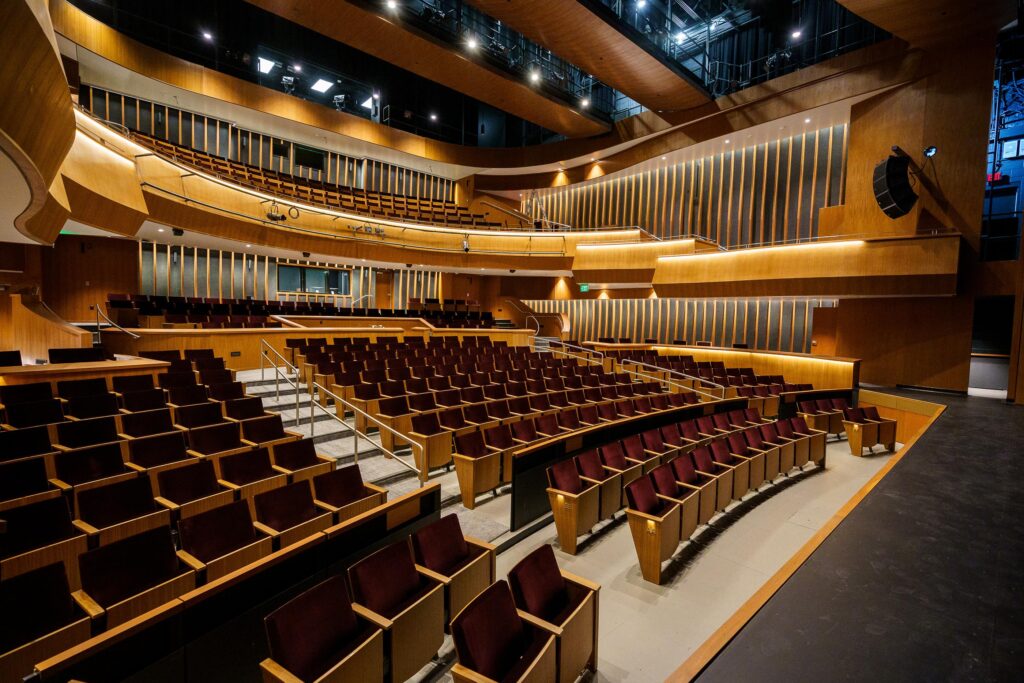As the performing arts continue to captivate audiences worldwide, certain venues are redefining their roles beyond traditional entertainment spaces. In our latest feature, “Beyond the Stage: 8 Performing Arts Centers Driving Entertainment and Education,” Livability.com explores how select institutions are transforming communities by blending dynamic performances with innovative educational programs. From fostering local talent to engaging diverse audiences, these centers are shaping the future of cultural experiences while contributing to regional vitality and learning.
Performing Arts Centers as Catalysts for Community Engagement and Cultural Growth
Performing arts centers are increasingly recognized as pivotal hubs that foster community connection beyond their theatrical offerings. By hosting workshops, outreach programs, and local artist showcases, these institutions cultivate a sense of collective identity and pride. They actively invite diverse audiences to partake in creative experiences that transcend traditional entertainment, nurturing ongoing dialogue and collaboration across age groups, cultures, and socioeconomic backgrounds.
Moreover, the impact of these centers extends into local economies and educational landscapes. Partnerships with schools, nonprofits, and businesses deliver compelling curricula and job training programs in the arts, offering youth alternative pathways to success. The synergy between cultural vibrancy and social engagement manifests in numerous ways, including community festivals, artist residencies, and volunteer-driven initiatives. Key benefits include:
- Enhanced accessibility through discounted tickets and adaptive programming
- Cross-disciplinary collaborations that blend visual, performing, and digital arts
- Support for emerging local talent through mentorship and showcase platforms
- Increased civic participation by serving as gathering spaces for important conversations
| Center | Community Programs | Annual Reach |
|---|---|---|
| Harmony Arts Hall | Youth Workshops, Cultural Festivals | 12,000+ |
| Unity Performing Arts | Senior Engagement Series, Artist Residencies | 8,500+ |
| Beacon Creative Center | School Partnerships, Public Lectures | 15,000+ |
Innovative Educational Programs Bridging Art and Audience
Leading performing arts centers are redefining engagement by crafting educational initiatives that dissolve the boundaries between performers and audiences. These programs often incorporate interactive workshops, masterclasses, and community collaborations designed to cultivate a deeper appreciation of the arts among diverse demographics. From youth outreach to adult learning series, the focus remains on creating immersive experiences that invite participants to step into the creative process rather than simply observe it.
Many venues adopt a multidisciplinary approach, blending traditional disciplines like theater and dance with emerging digital media to stay relevant and accessible. The result is a dynamic learning environment fostering innovation, critical thinking, and cultural exchange. Below is a snapshot of typical program elements emphasizing this bridge-building mission:
| Program Type | Key Features | Audience Focus |
|---|---|---|
| Interactive Workshops | Hands-on technique sessions with artists | Students & Aspiring Performers |
| Community Storytelling | Local history and culture through performance | General Public |
| Digital Arts Labs | Integration of VR/AR in live performance | Tech Enthusiasts & Creatives |
| Artist Residencies | Collaborative creation and public engagement | Art Practitioners & Scholars |
Recommendations for Enhancing Accessibility and Inclusivity in Performing Arts Venues
To foster truly welcoming environments, performing arts centers must go beyond compliance and actively embrace universal design principles. This involves integrating features like audible and visual signage, adjustable seating options, and real-time captioning services to cater to diverse audiences. Incorporating tactile guides and offering sensory-friendly performances can also substantially enhance the experience for visitors with varying abilities. Staff training on disability awareness ensures patrons feel respected and supported from ticket purchase to seat departure.
Technology plays a crucial role in bridging accessibility gaps, with apps that facilitate easier navigation inside venues and assistive listening devices becoming standard offerings. Implementing flexible ticketing policies, such as advance seat selection and companion seating, promotes inclusivity for groups with unique needs. Below is a snapshot of key initiatives that are reshaping audience engagement across top-tier centers:
| Initiative | Purpose | Impact |
|---|---|---|
| Interactive Mobile Apps | Venue Navigation & Accessibility Info | Improved autonomy for patrons with disabilities |
| Multi-Sensory Shows | Engagement for Neurodiverse Audiences | Increased attendance among families seeking inclusive outings |
| Train-the-Trainer Workshops | Staff Sensitivity and Response Skills | Higher satisfaction scores in customer service |
| Assistive Device Rentals | Hearing and Visual Aid Accessibility | Expanded reach to patrons with sensory impairments |
Final Thoughts
As performing arts centers continue to evolve as vital hubs for both entertainment and education, these eight institutions exemplify how cultural venues can enrich communities beyond traditional performances. By fostering creativity, accessibility, and learning, they not only elevate the arts but also contribute significantly to local livability and economic vitality. As audiences seek more immersive and meaningful experiences, these centers stand at the forefront, shaping the future of performing arts in dynamic and inclusive ways.
